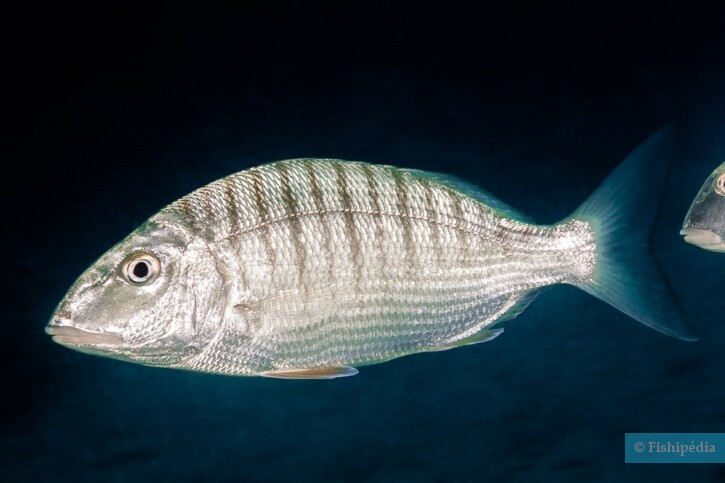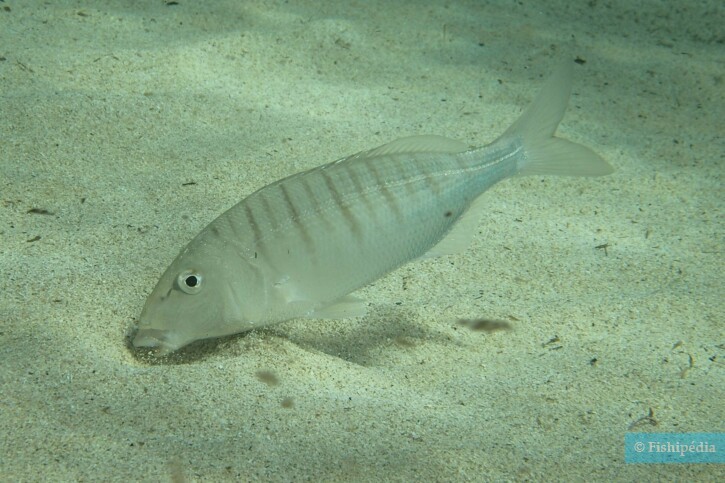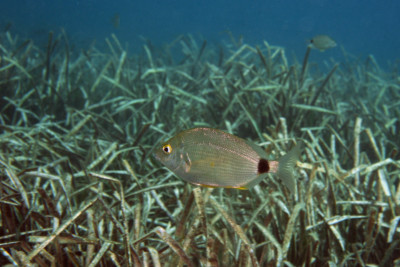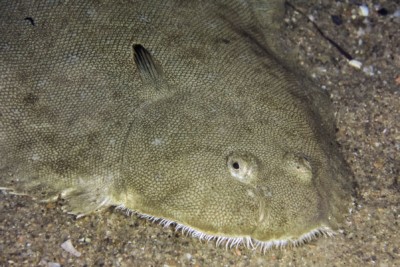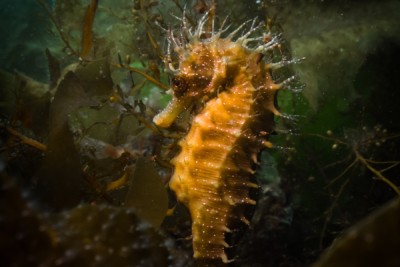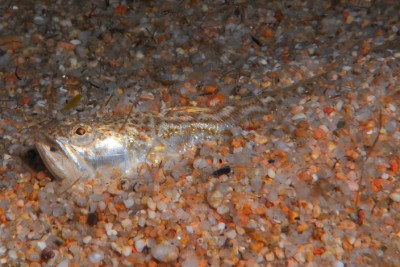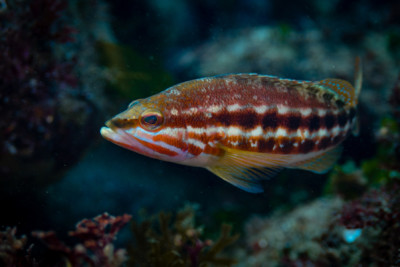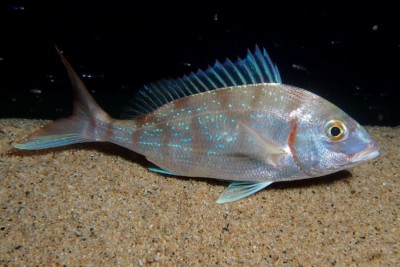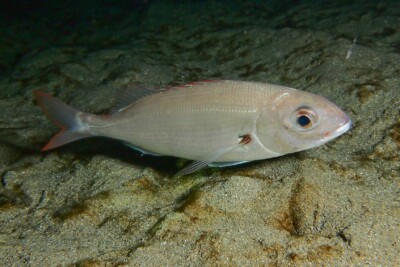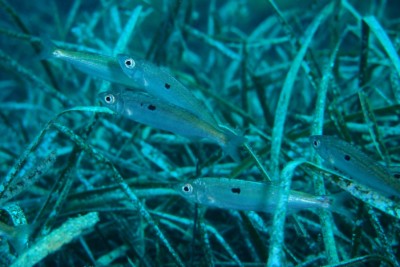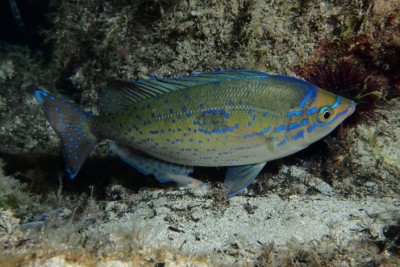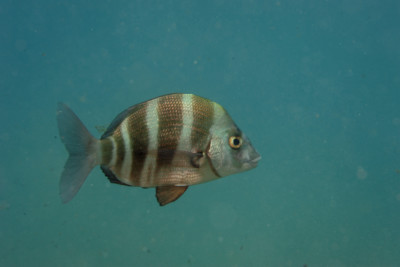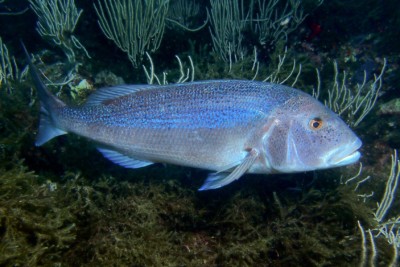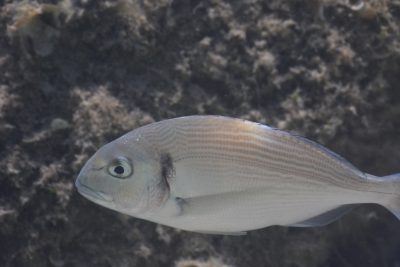striped seabream
| Family | Sparidae |
|---|---|
| Genus | Lithognathus |
| IUCN category (World) | LC |


Introduction
Lithognathus mormyrus, commonly known as striped seabream, is a salt water fish.
This sheet is currently being prepared. The texts currently proposed come from our data model or are being drafted. To request priority for this content, you can write to us HERE.
Who is it?
Morphology
-
Average size30 cm
-
Maximum size55 cm
-
Longevity12 year
-
Mimicrysand
-
Patternvertical stripes
-
Average size30 cm
-
Maximum size55 cm
-
Longevity12 year
-
Mimicrysand
-
Patternvertical stripes
How to recognize This fish ?
The striped seabream measures between 30 and 55 cm. This fish is bicolore with a predominantly argent and gris body. The also has noir vertical stripes.
Behaviour & Life cycle
-
dietcarnivorous
-
Sociabilitygregarious
-
territorialNo
-
Way of livingdiurnal
The striped seabream is a fish gregarious naturally found near the bottom. This species is carnivorous .
n general, this species does not care much about other animals crossing its path.
Reproduction
-
Reproductionovipare qui pond en eau libre
-
Hermaphroditeprotandric
The striped seabream is a fish ovipare qui pond en eau libre. This fish always born male. Growing up, individuals will change sex to become female, this is called successive hermaphroditism of the protandrous type.
Harmless species
This species does not represent any particular threats to humans when encountered in its natural environment.
Origin and distribution
What is its habitat?
Natural environment characteristics
-
Temperature14 - 26 °C
-
Depth0 - 150 m
Biotope presentation
The striped seabream is most often found at a depth between 0m and 150m. However, it is not impossible to find this species at other depths.
Species of the same biotope
To go further
Sources & Contributions
Participation & Validation
The Fishipedia team and specialist contributors are committed to providing high-quality content. However, although the information comes from scientific sources or testimonials from specialists, the cards may contain inaccuracies.

Benoit Chartrer
Translation
Translation done with the valuable contribution of our translators, who make this information available to a wider audience. We sincerely thank them for their commitment.
Scientific partners
Tags
#Sparidae
#Lithognathus
#fonds sablonneux
#fonds vaseux
#herbier
#zone mixte
#Mediterranean Sea
#Black Sea
#Red Sea
#Océan Atlantique Est Afrique - Angulhas
#Océan Atlantique Est Afrique - Golfe de guinée
#Temperate Eastern Atlantic Ocean
#Océan Atlantique Est Afrique - Transition & Cap Vert
#Eastern tropical Atlantic Ocean
#Corsica
#Canary Islands
#Madère
#Sardinia
#Sicily
Species of the same family
Species of the same biotope
